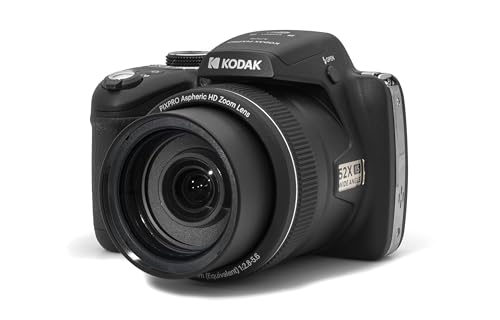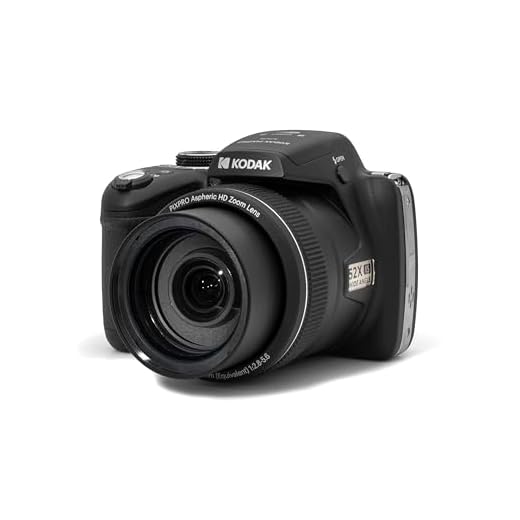




Witnessing a meteor shower can be a breathtaking experience, but capturing it with a digital camera can be equally thrilling. The challenge lies in the unpredictability of the meteors and the need for precise timing to catch them in action. However, with the right equipment and techniques, you can immortalize the beauty of a meteor shower in stunning photographs.
In this guide, we will explore the essential tips and tricks for photographing a meteor shower with a digital camera. From choosing the right camera settings to finding the perfect location, we will help you maximize your chances of capturing stunning meteor shower images that will leave everyone in awe.
Preparing for the Event
Before heading out to photograph a meteor shower with your digital camera, it’s important to prepare adequately to ensure a successful shoot. Here are some key steps to take:
Research the Meteor Shower
Find out when the meteor shower is expected to peak and the best time to view it in your area. Knowing the peak hours will help you plan your shoot accordingly.
Choose a Location
Select a dark location away from city lights to minimize light pollution and maximize visibility of the meteors. Consider scouting the location in advance to familiarize yourself with the surroundings.
Gather Your Gear
Make sure you have all the necessary equipment, including your digital camera, a sturdy tripod, extra batteries, memory cards, and any additional lenses or accessories you may need.
Check the Weather
Monitor the weather forecast leading up to the meteor shower night. Clear skies are essential for capturing clear shots of the meteors streaking across the sky.
Research the Meteor Shower
Before heading out to capture a meteor shower with your digital camera, it’s essential to research the event thoroughly. Start by finding out the peak dates and times of the meteor shower you plan to photograph. Websites like the International Meteor Organization (IMO) or the American Meteor Society provide detailed information about upcoming meteor showers, including their intensity and duration.
Additionally, check the weather forecast for the night of the meteor shower. Clear skies are crucial for successful astrophotography, so make sure to pick a night with minimal cloud cover. Planning ahead will increase your chances of capturing stunning meteor shower images with your digital camera.
Peak Dates and Times
Consult a reliable source to determine the peak dates and times of the meteor shower you want to photograph. Mark these dates on your calendar and prepare your camera gear accordingly. Some meteor showers have specific peak hours when the meteor activity is most intense, so plan your shoot accordingly.
Weather Forecast
Keep an eye on the weather forecast leading up to the meteor shower. Choose a night with clear skies and minimal light pollution for the best results. Cloudy skies can obstruct your view of the meteor shower and hinder your astrophotography efforts. Be prepared to adjust your shooting location based on the weather conditions to maximize your chances of capturing stunning meteor shower images.
| Tip: | Consider using a weather app or website that provides hourly forecasts to plan your meteor shower photography session effectively. |
Choose the Right Location
When photographing a meteor shower with a digital camera, choosing the right location is crucial for capturing stunning shots. Here are some tips to help you select the perfect spot:
- Find a Dark Sky: Opt for a location away from city lights and light pollution to ensure clear visibility of the meteor shower.
- Scout the Area: Before the meteor shower night, visit the location during the day to identify potential compositions and interesting foreground elements.
- Consider the Horizon: Choose a location with an unobstructed view of the sky to capture as many meteors as possible.
By selecting the right location, you can enhance your chances of capturing breathtaking images of the meteor shower with your digital camera.
Gearing Up
Before heading out to photograph a meteor shower with your digital camera, make sure you have the right gear. Here are some essentials you’ll need:
- A sturdy tripod to keep your camera steady during long exposures.
- A wide-angle lens to capture as much of the night sky as possible.
- A remote shutter release or intervalometer to minimize camera shake.
- A fully charged battery and extra memory cards to ensure you don’t miss any shots.
- A flashlight with a red filter to preserve your night vision while adjusting settings.
Having the right gear can make all the difference when photographing a meteor shower, so make sure you’re prepared before you head out into the night!
Use a Sturdy Tripod
When photographing a meteor shower with a digital camera, it is essential to use a sturdy tripod to keep your camera steady and prevent any blurriness in your photos. A tripod will help you achieve sharp and clear images, especially when using long exposure settings to capture the faint trails of meteors streaking across the sky.
Choosing the Right Tripod
Make sure to choose a tripod that is stable and durable enough to support the weight of your camera and lens. Look for a tripod that is adjustable in height and has a solid base to prevent any wobbling or movement during the exposure.
Adjust Camera Settings
When preparing to photograph a meteor shower with your digital camera, it’s crucial to adjust your camera settings for optimal results. Here are some key settings to consider:
1. Manual Mode
Switch your camera to manual mode to have full control over the exposure settings. This will allow you to adjust the aperture, shutter speed, and ISO according to the lighting conditions.
2. Wide Aperture
Set your aperture to a wide setting (low f-stop number) to capture more light and increase the chances of catching a meteor streaking across the sky. A wide aperture also helps create a beautiful bokeh effect in the background.
Tip: Consider using a lens with a wide aperture, such as a prime lens with an f/1.8 or lower aperture, for best results.
By adjusting your camera settings appropriately, you can capture stunning images of meteor showers and create memorable photographs to cherish for years to come.
Capturing the Meteor Shower
To capture the beauty of a meteor shower with your digital camera, there are a few key tips to keep in mind:
1. Find a Dark Location
Choose a location away from city lights to avoid light pollution and ensure the best visibility of the meteor shower.
2. Use a Tripod
Stability is crucial when photographing a meteor shower. Use a tripod to keep your camera steady and prevent blurriness in your shots.
Pro Tip: Consider using a remote shutter release or the camera’s self-timer function to minimize camera shake.
Follow these guidelines to capture stunning photos of the meteor shower and enjoy the beauty of the night sky!
Set Up Manual Focus
When shooting a meteor shower with your digital camera, it’s important to set up manual focus to ensure sharp and clear images. Autofocus can struggle to lock onto the fast-moving meteors, so manually adjusting the focus is the way to go.
Start by switching your camera to manual focus mode. Locate the focus ring on your lens and adjust it until the stars appear sharp in the viewfinder or on the LCD screen. You may need to experiment with different settings to find the perfect focus point.
Remember to set your focus to infinity for shooting the night sky and meteor showers. This will ensure that distant objects like stars and meteors are in focus. Once you have set up manual focus, you’ll be ready to capture stunning images of the meteor shower with your digital camera.
Use a Remote Shutter Release
One of the most important tools for capturing a meteor shower with your digital camera is a remote shutter release. This device allows you to trigger the camera without actually touching it, reducing the chances of camera shake and ensuring sharp images. When photographing a meteor shower, any movement of the camera can result in blurry photos, so using a remote shutter release is essential.
By using a remote shutter release, you can set up your camera on a tripod, frame your shot, and then trigger the shutter from a distance. This minimizes the risk of camera shake and ensures that you capture the meteors as they streak across the sky. If you don’t have a remote shutter release, you can also use the camera’s self-timer function to trigger the shutter without touching the camera.
FAQ
What equipment do I need to photograph a meteor shower with a digital camera?
To photograph a meteor shower with a digital camera, you will need a camera with manual settings, a sturdy tripod, a wide-angle lens (preferably with a low aperture), a remote shutter release, and a dark location away from light pollution.
How can I set up my camera to capture a meteor shower?
To capture a meteor shower, set your camera to manual mode, adjust the ISO to a high setting (e.g. 1600 or higher), open the aperture to its widest setting, set the focus to manual and infinity, and use a long exposure time (e.g. 20-30 seconds).
What is the best time to photograph a meteor shower?
The best time to photograph a meteor shower is during the peak of the shower when the most meteors are visible. Check online resources for the exact dates and times of meteor showers throughout the year.
How can I enhance my meteor shower photos in post-processing?
In post-processing, you can enhance your meteor shower photos by adjusting the exposure, contrast, and color balance. You can also stack multiple images to create a composite image with multiple meteors in one frame.
What are some tips for beginners who want to photograph a meteor shower?
For beginners, it’s important to practice using your camera’s manual settings before the meteor shower. Make sure to arrive at your location early to set up your equipment and frame your shots. Patience is key when photographing meteor showers, so be prepared to spend a few hours capturing the perfect shot.







